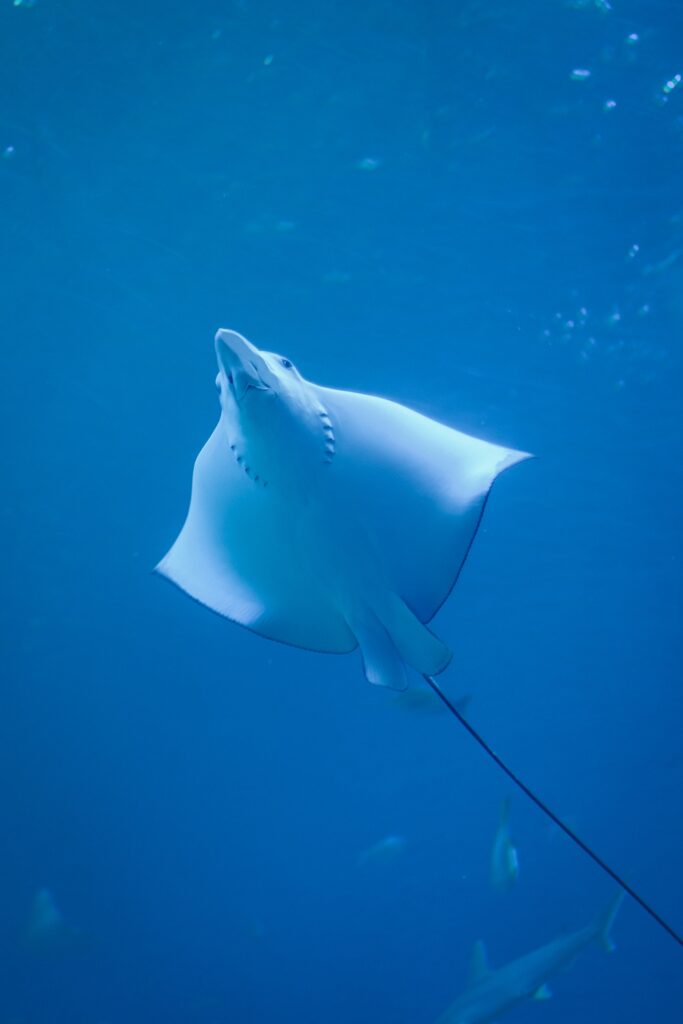Elasmobranchs of India
There are over 150 species of elasmobranchs (sharks and rays) recorded from India and all of them have unique adaptations such as cartilaginous skeletons, visible gill slits, and ability to detect electric impulses in the water and under the surface of the sea floor. Most elasmobranchs are slow growing, reproduce in small numbers and predatory in their niches. They are found in all oceans and a few species around the world also venture in freshwater/brackish water during specific life stages.
SHARKS
- Shark teeth are the only part that are found in fossil records since they do not possess a hard bony skeleton. Their skin is made of small teeth-like structures called denticles that aids the shark in swimming better in the turbulent waters and reduces the drag making them swift efficient hunters!
- Sharks are found in all oceans and up to depths of 2000 m or more and range in sizes from 17 cm to 12 m. Some of the earliest shark records in fossil history go up to 200 million years ago. Most sharks give birth to live young ranging from 4-20 pups at a time, some sharks lay egg sacks called “mermaid purses” that are uniquely-shaped
Common myths about sharks
- Most sharks are completely harmless, small and very shy animals. Even on the extremely rare occasion of a shark attack it is only when they are provoked or by accident.
- Thanks to movies, books, and stories by sailors, there is a common misconception that all sharks are large, vicious, carnivorous animals that will attack humans the first chance they get.
- While junk food claims the lives of 11 million people annually worldwide according to WHO, unprovoked shark attacks, confirmed from 1580 till now, have resulted in only 286 death till now worldwide… Learn More

RAYS (Batoids)
- Rays are the most diverse group of cartilaginous fish (Elasmobranchs) with flat bodies and extended pectoral fins that are fused to their head with gill slits on the underside (ventral side) .

Group of Stingrays
- eagle rays
- manta rays
- electric rays
- skates
- shovelnose rays
- sawfishes
- guitarfishes (etc..)
- Rays come in a myriad of shapes and sizes and each group of ray has its own unique adaptation; the electric rays can use electric shocks to hunt their prey, sting rays have a stinging spine in their tail which can inject toxins/venom that can be fatal to humans, Manta rays glide through sun-rich shallow waters to feed on great schools of tiny crustaceans like krill.
While junk food claims the lives of 11 million people annually worldwide according to WHO, unprovoked shark attacks, confirmed from 1580 till now, have resulted in only 286 death till now worldwide .






